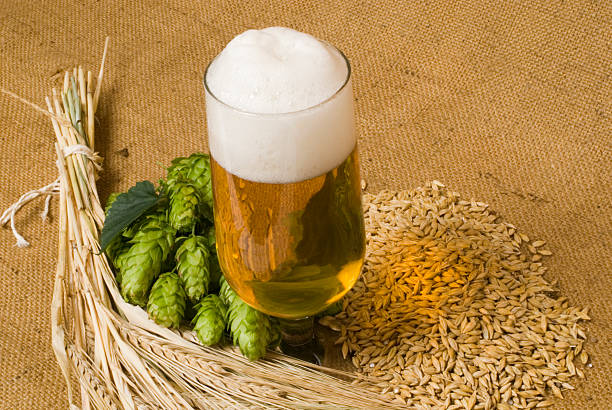The ideas, concepts, and theories behind the sustainability of craft beer making are constantly evolving making it one of the most fascinating and vital conversations of the New Year. As finite natural resources deplete, environmental chaos ensues, and discussions about sustainability stall it is now more important than ever before to keep the dialogue progressing within the craft beer industry. From mitigating ozone depletion and global warming to water conservation to solar energy there is a wide variety of ways sustainability can be applied to a craft beer brewery’s production and operations and approach to environmental stewardship. As companies and businesses become more and more incentivized to reduce their carbon footprint and environmental impact the value of sustainability practices will constantly rise for the foreseeable future of beer brewing.
While there are many craft beer breweries implementing sustainability practices at their brewing facilities there is still a long way to go when it comes to the sharing of ideas and the mass adoption of proven environmentally friendly concepts. Still, very much in its infancy, only time will tell just how far breweries can take the undiminishable need for sustainability within the business of craft beer making. As more and more “cool” concepts pop up every day in regard to sustainable brewing it is important to keep an eye on what others are trying and what is and is not working in real-world practice. Let’s take a look at some of the more interesting sustainable craft beer brewing ideas being utilized in 2023 to get a better idea of how to improve craft beer-making equipment and processes as a whole.
Sustainable Craft Brewery Idea #1: Ammonia Refrigeration
Ammonia is an effective and efficient refrigerant used in food and drink processing and preservation. Ammonia has desirable characteristics as a refrigerant, most notable is the fact when released into the atmosphere, it does not contribute to ozone depletion or global
Warming. Other benefits of ammonia refrigeration are that it is readily available,
inexpensive, operates at pressures comparable with other refrigerants, and is capable of absorbing large amounts of heat when it evaporates. All of the above characteristics make ammonia refrigeration in craft beer brewing a highly sustainable approach to production.
Sustainable Craft Brewery Idea #2: Dry Brewery Floor Policy
Research shows that craft beer brewing industry standards typically require 8-10 pints of water for every pint of beer brewed making water conservation an important subject matter in beer-making sustainability. In a traditional brewing setup, most breweries drain their waste products to the brewery floor and use hoses to wash them down to drain. Operating a “Dry Floor” policy where brewery waste is managed without water use can not only save hundreds of liters of the precious natural resource that is H2O every day but also makes for a drier, safer, more hygienic, and sustainable environment.
Sustainable Craft Brewery Idea #3: 100% Off-Grid Solar Energy
100% off-grid solar energy craft beer brewing is using the sun autonomously to drip operations without having to rely on a public power grid or provided energy utility. Beyond energy independence and environmental conservation, building your business to function 100% off-grid means embracing a more simple, more self-sufficient, and more sustainable means of craft beer production. A 100% off-grid solar energy-saving system generates electricity, stores that power in solar batteries and runs independently from the public power grid and local utilities companies which can save endless amounts of natural resources in the process when done correctly.
Sustainable Craft Brewery Idea #4: LEDs & Networked Lighting Control Technology
LED lights are 75% more efficient than incandescent bulbs. An “Intelligent LED Lighting System” incorporates occupancy and photo sensing within each fixture, advanced dimming control, networked capabilities, performance tracking, on-site monitoring, data collection, and statistical analysis all in the name of environmental efficiency and sustainability. Studies show that 20% energy savings and more can be provided by “tuning” LED lights to specific area tasks, daylight and seasonal control harvesting, and occupancy sensors rather than employing a one-size-fits-all approach across the facility. In addition to the above, these LED light systems can automatically test and store compliance reports adding even more aspects to its sustainable brewery strategy.
Sustainable Craft Brewery Idea #5: Spent Grain Management
Collecting the spent grain from the brewing process and delivering it to local farmers for feed provides sustainability to the environment in a multitude of fashions. Farmers note that the high water content of the grain means that animals are more hydrated and end up drinking less water from their troughs, further reducing water usage for the world. Used grain sacks, supersacks, and bags which are often hard to dispose of can be recycled or repurposed when given special attention into a proper environmentally friendly brewery grain management system. How breweries handle grain can be a great pain point to grow from in terms of sustainability.
While the above are just a few of the ideas on the sustainable brewery radar in 2023 it will be interesting to see what environmentally-friendly emerge the most in the New Year for breweries to consider. If you could upgrade your craft beer in one environmentally friendly way where would you start?

